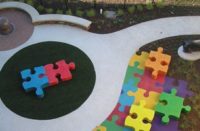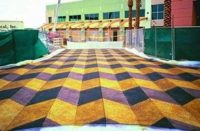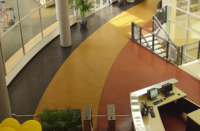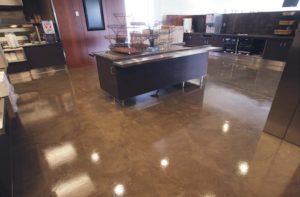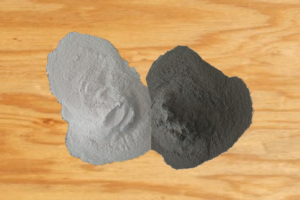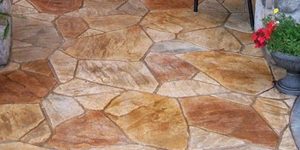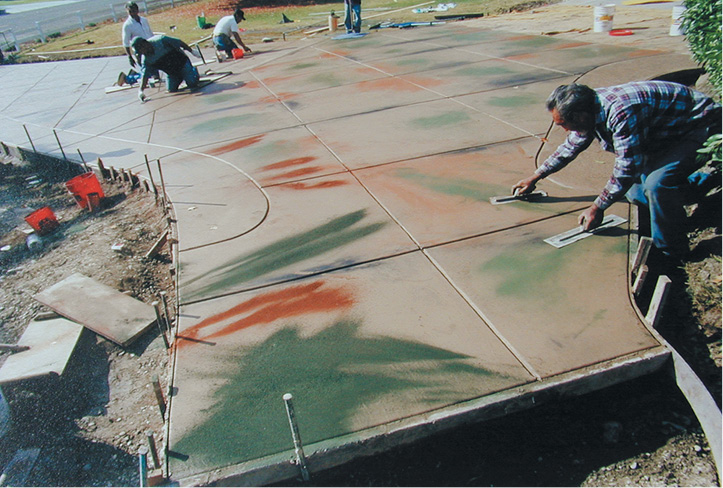 Gil Santistevan’s start in crafting decorative concrete work came out of boredom, not necessity. His creative energy was ignited with some simple sketching with a trowel in the concrete he poured on curbs and gutters in Colorado while awaiting the next load of concrete.
Gil Santistevan’s start in crafting decorative concrete work came out of boredom, not necessity. His creative energy was ignited with some simple sketching with a trowel in the concrete he poured on curbs and gutters in Colorado while awaiting the next load of concrete.
Now, more than 50 years after his first swirls and circles in a driveway, Santistevan marvels at how far the industry has come and how he has made a living crafting decorative concrete. “You can do all kinds of things with concrete that people never even thought about back then,” says Santistevan, 71, who now serves as a consultant to his son Kevin, who runs a concrete stamping and stain business based in Vacaville, California.
“You can fancy jobs up with simple things, like cutting squares in patios, easy stuff that the average concrete man won’t do because the boss doesn’t want him to do it. Broom one way, then broom the other, add some color, seal it and you get a beautiful basket weave,” explains Santistevan.
Santistevan’s career parallels the growth and development of stamping. Looking through his eyes, one can move from the simplicity of the early days of using simple techniques to create new art in concrete to today’s combination of stains and stamps to create a surface that, in some senses hides its origins in simple concrete.
Santistevan began as a laborer in the 1940s. By 1949, he earned his union card, entitling him to a whopping $1.52 per hour to create water tunnels across the mountains and canals at Fort Collins near Denver Colorado. “I was helping out on Saturdays and after school, and I just got hung up on concrete,” recalls Santistevan.
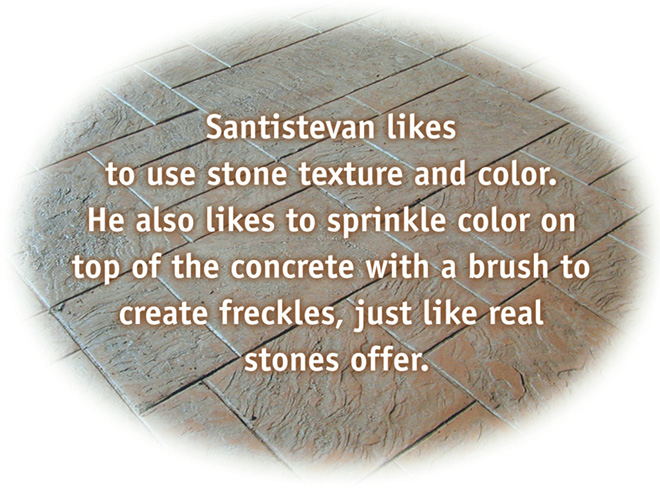 In time he moved to a position as a form setter and finisher on catch basins, and curbs and gutters in the Denver area. At Commercial Concrete much of his work involved fixing the effects of the widening of streets and boulevards in Denver; he learned how to do steps, replacements for the property owners’ previous steps that were consumed with the widening of the roadbed. He did overlays, cantilevers and floating steps, taking what to some might be a quick-fix situation and making it something unique, special, and memorable.
In time he moved to a position as a form setter and finisher on catch basins, and curbs and gutters in the Denver area. At Commercial Concrete much of his work involved fixing the effects of the widening of streets and boulevards in Denver; he learned how to do steps, replacements for the property owners’ previous steps that were consumed with the widening of the roadbed. He did overlays, cantilevers and floating steps, taking what to some might be a quick-fix situation and making it something unique, special, and memorable.
These first steps into steps would help make this common feature his first love.
In 1965, Santistevan moved to California, drawn by the longer seasons. He found a job with a man who would become his mentor, Peter Antonini, who operated a successful concrete business based in Vacaville, a community in Northern California growing by leaps and bounds with new track homes. He did the usual jobs, creating driveways, sidewalks, steps, etc.
Antonini showed Santistevan how to build better, more complicated step designs. Whether working on steps or other concrete forms, he now employed fancier concrete techniques than he had employed on his street work in Denver some years earlier.
But he added his own twists. He and his crew would be pouring between 10 and 12 driveways and 8 to 10 grades a day. With whatever tools were handy, often a trowel, Santistevan would carve out simple geometric shapes in the concrete. “We used to go behind the machines to play around. In the middle of the slag, you can’t walk out. I used to try to see how to make the forms in the concrete,” he recalls. The scrawl finishes created with cuts in joints, the troweling of circles and patterns in the concrete, the exposed borders, the sweating of concrete long before mats were created—people started to take notice of the forms that were being created, first in the models homes.
“People would see the model homes done up with our concrete work and they would want them dressed up for themselves,” Santistevan recalls.
But the techniques he was using were still primative in their creation.
He soon expanded his skills by putting curved borders in place. He and his crew formed the borders for residential steps with siding boards, which, of course, were always in plentiful supply near new housing projects. To round steps, one of his favorite effects, Santistevan would often use redwood bender board. Sometimes the builders or architects would suggest designs to complement the home’s design; other times he’d sketch something on paper, seeking permission from the prospective owner to try something different. Rarely in his career did Santistevan get turned down on his designs.
Business was good in the early 1970s. He created a partnership with Antonini to do more custom concrete work on his company’s new homes, mostly on weekends and one day a week. He worked four days a week for Antonini, forming and laying concrete on new homes. When he did his own work, he charged $90 for a five-step, five-riser, six-foot-wide staircase. He did the setup and forming himself, often three a day.
In 1976, he formed his own company, employing between 6 and 10 people. They did decks, patios, garages, driveways for some of the larger homebuilders in the area, including Shay Homes, K&B Homes and Lewis Homes, several of California’s and the nation’s most prominent home builders. Five years later, Santistevan bought his first stamps. They were aluminum products and cost about $25.00 each. “They actually work great and really improve on what we are doing,” he says.
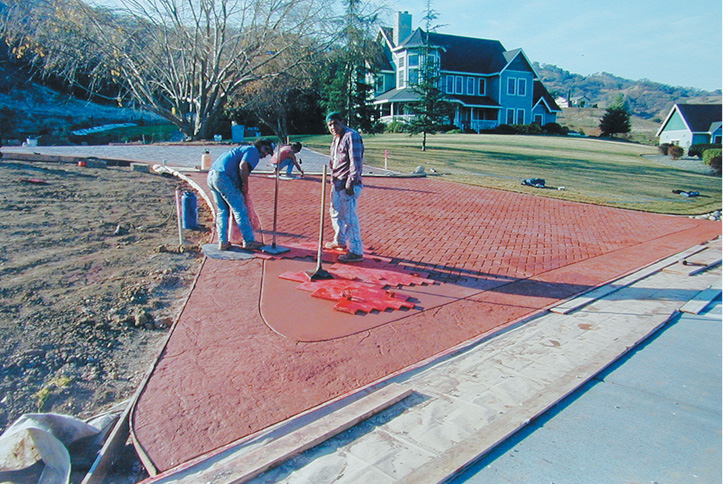 Santistevan found himself needing to create green courts and red out-of-bounds areas on tennis courts at a number of new schools being built in California. He used Davis colors, mixing them himself in 30-gallon garbage cans with sand and cement. At that time he didn’t count on the truck color because it might be different from load to load. By mixing his own in the large garbage cans, he ensured he had enough to do the whole job.
Santistevan found himself needing to create green courts and red out-of-bounds areas on tennis courts at a number of new schools being built in California. He used Davis colors, mixing them himself in 30-gallon garbage cans with sand and cement. At that time he didn’t count on the truck color because it might be different from load to load. By mixing his own in the large garbage cans, he ensured he had enough to do the whole job.
When he wasn’t working on schools, he did residential jobs in the Northern California area. People had money and they wanted something unique. His reputation was spreading—as was his confidence. “I would just look at the yards and come up with something. If we didn’t have a plan, I would just go with a plan I had used before. Either that or I would just create something new. As I set it up, I figured different ways to do it,” he says.
Often, the focal point of his work at houses was what most people merely consider a way to go up or down. “I love steps and different elevations because steps are beautiful, just beautiful, he says. “Steps can make a heck of a lot of difference. I’m a good concrete man, and it’s something not too many concrete men are good at. Just think of the White House and how beautiful those steps are.”
After more than 30 years of creating most of his effects by hand with minimal technological intervention, he decided to try open-face metal stamps in 1981. He’d heard about them, but never saw them in action. He tried his luck with creating steps to a wooden deck.
Since then he has expanded the effects he can create. Santistevan likes to use stone texture and color. He also likes to sprinkle color on top of the concrete with a brush to create freckles, just like real stones offer. “I couldn’t believe how good it looked. It was amazing,” he says, as excited now about that discovery as he was then.
In 1987, he started using texture mats. They were easier to work with than the metal stamps. The colors were easier to create. They could broadcast hardener to make a more elegant appearance in the coloring of rocks. He still used color from the trucks, but he also mixed his own. He knows that his own mixing gives him more diversity, greater flexibility and above all, more consistency. His experience helps him with crafting decorative concrete that pays the bills.
“It’s more dainty, more elegant, like between silk and cloth with hardeners. The grays and browns last forever. When you throw your own colors, what you see is what you get,” he says. “That makes it so much easier to create what you are trying to create when you know that what you are seeing is what’s going to be there when it’s done.”
Now, he’s making his first foray into acid-based stains, often on custom works in the Brentwood section of California, an area where the late New York Yankees’ manager Billy Martin lived. In fact, Martin was one of Santistevan’s customers some years ago.
Just as managing a baseball team has changed since the Martin era, the stamping and decorative concrete trade is different than in the past. Technology has widened the color wheel that can be used in concrete work. This gives Santistevan greater ability to match the colors in his vision with the colors in the concrete. “Now they’re using color on buildings instead of the grays we used to have to work with,” he says. “Color is something else, just look at Las Vegas. Now that shows you what color in cement can do. Amazing.”
He’s now also working with overlays. In one job he has been cutting squares into the overlay on the patio to stain ember. This will match the house’s brown exterior. He’s working with his sons Kevin and Steven, sharing expertise learned from creating miles of curb and gutters. He has also developed thousands of garage and driveway units over a 50-year career.
Steve, his other son, who was his partner for years, is now a part owner of Pacific Concrete which is associated with Fred Hearns Construction in Vacaville, California.
He can’t imagine retiring. He says the advances in the industry in the last two decades supercede his wildest dreams of five decades ago. Spending a few days a week in the field, he is working on crafting decorative concrete in ways he couldn’t have even imagined more than 50 years ago.
“I enjoy breaking my back and the sweat. I like to do a job. Then I like to sit back and look at it. To see how pretty it looks. That’s how I like to pat myself on the back for what I have accomplished in that concrete.”
